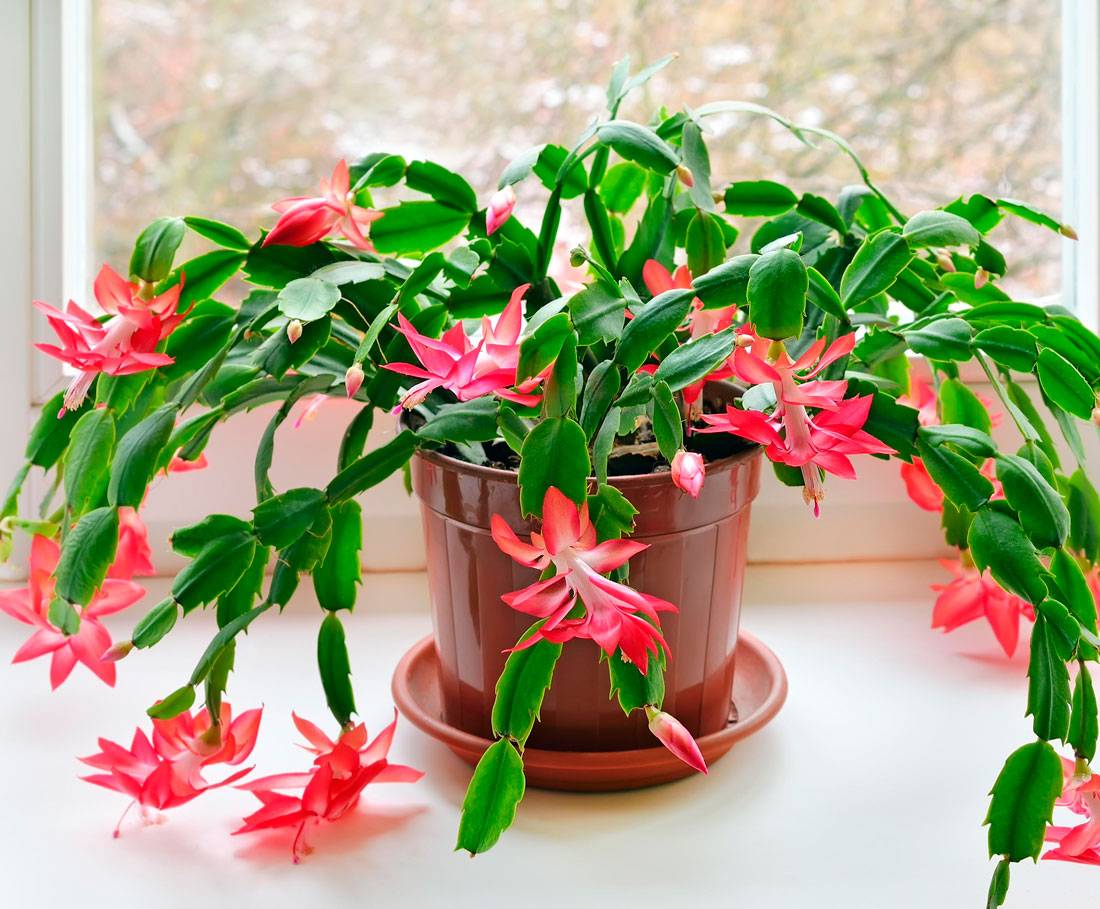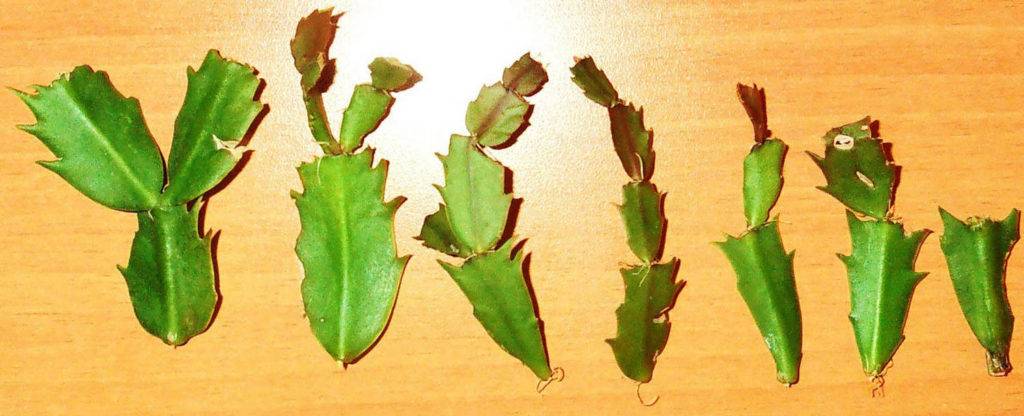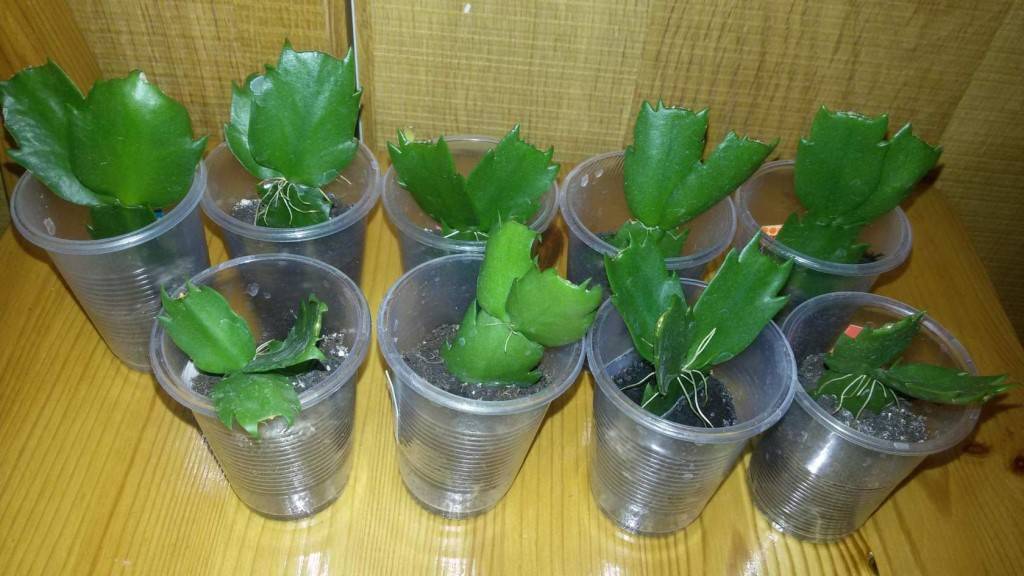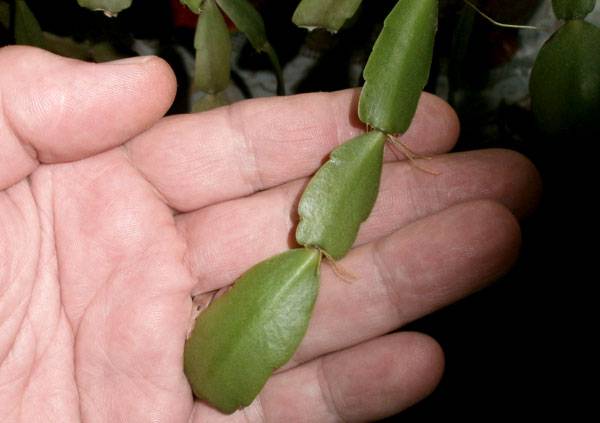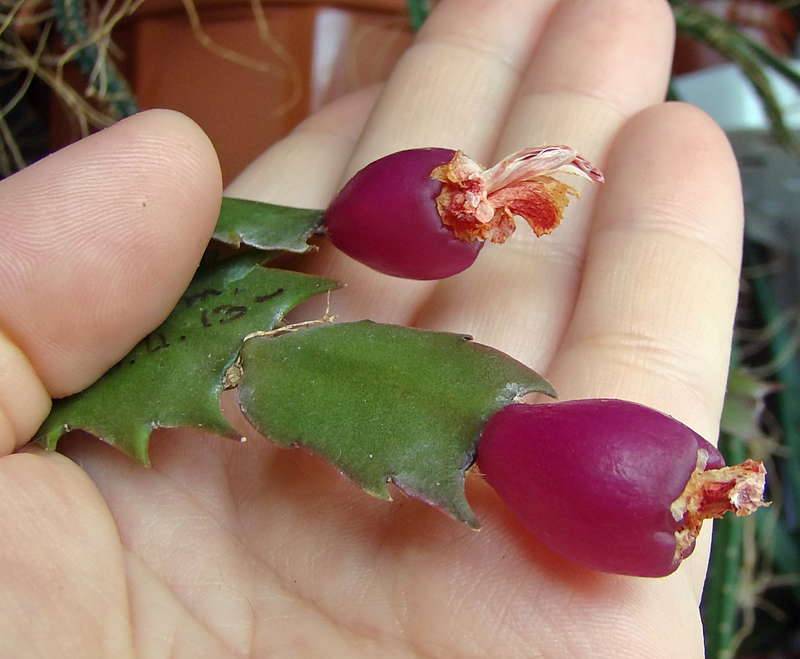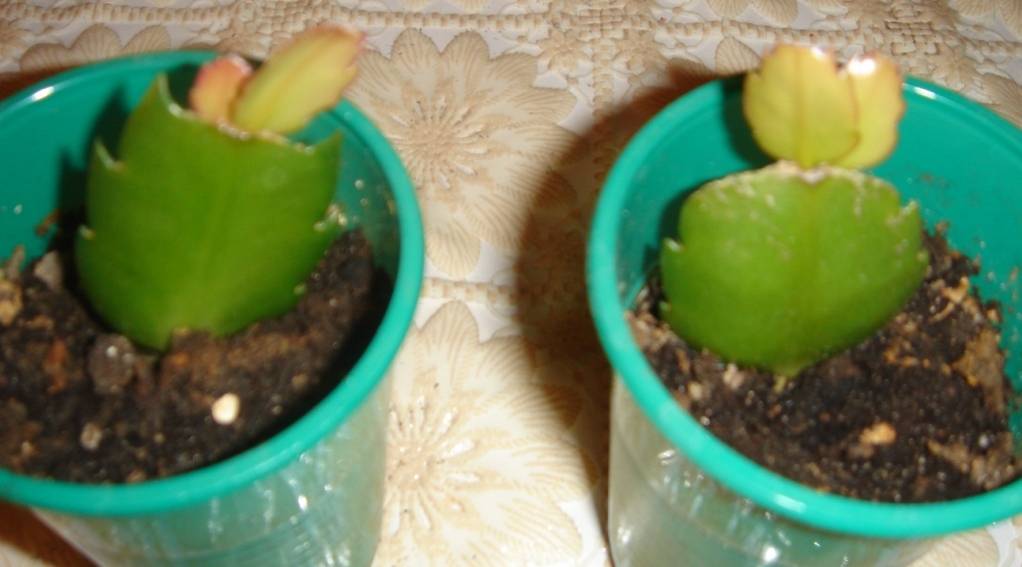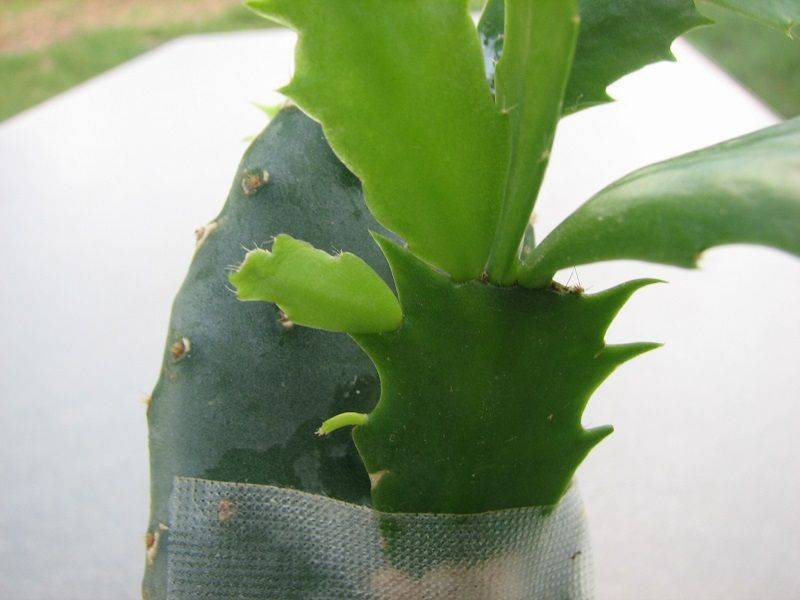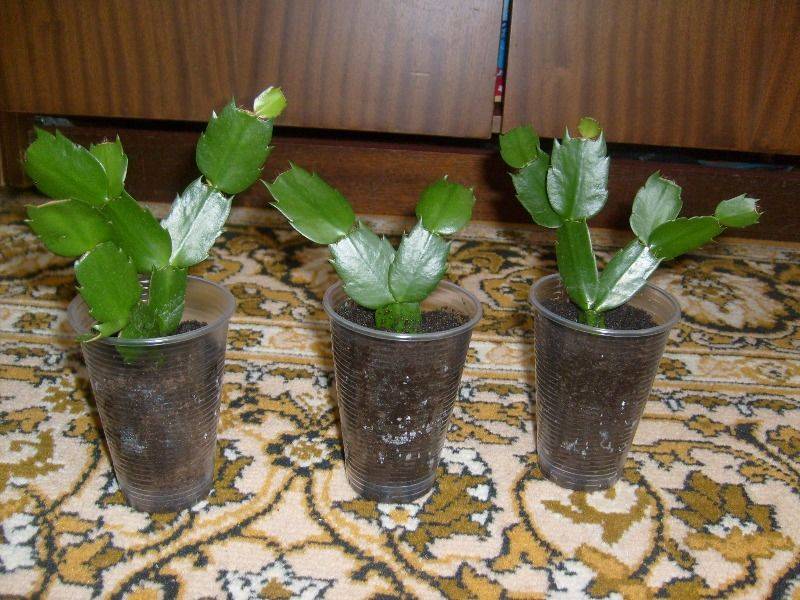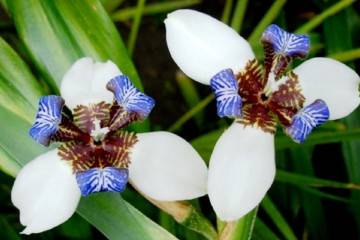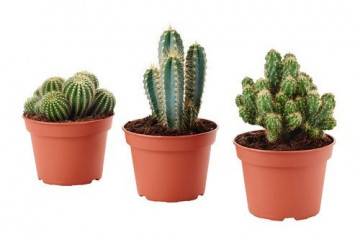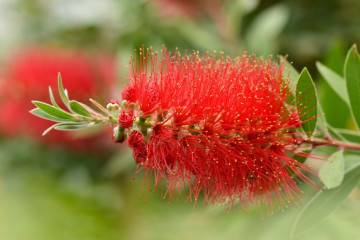How to propagate a Decembrist at home: examples without roots and leaves
Content:
The Decembrist is one of the few indoor plants that pleases with its lush flowering during the winter cold. Those who are engaged in flower cultivation are interested in how to propagate a Decembrist at home. The epiphytic cactus has its own characteristics of reproduction, subject to which it is possible to grow young plants without much difficulty.
Breeding methods of the Decembrist
Decembrist (Schlumberger) is an epiphytic cactus that blooms in winter. Unlike many succulents, it has no thorns. The leaf blades are actually the thickened parts of the stems in which the plant accumulates moisture during the dry season. The popularity of the Decembrist is not accidental: it is explained by the attractive appearance of a perennial, a long flowering period, and unpretentious care.
Before proceeding with the propagation of a plant, you need to prepare suitable containers for planting and a substrate. Plastic and ceramic pots are suitable for growing perennials. They should be wide, but not deep. The root system of a perennial is superficial, stagnant moisture in the soil can lead to the appearance of a fungal infection.
The soil can be purchased in a specialty store marked "for succulents" or you can prepare it yourself. The substrate should be light, loose, breathable and permeable to water. Zygocactus grows well in soil with pH 5.0-6.5.
Components of the soil mixture:
- leaf land - 50%;
- sod land - 10%;
- humus —20%;
- coarse sifted sand - 20%;
- perlite or expanded clay - 10%.
The soil made at home should be disinfected by steaming in the oven at 100 degrees for half an hour or spilled with Fitosporin solution.
How the Decembrist reproduces:
- dividing the bush;
- cuttings;
- vaccination;
- leaves.
The key to successful plant reproduction is:
- healthy planting material;
- the use of light loose soil;
- maintaining the right temperature and humidity during rooting;
- proper care of young seedlings.
Seed propagation
This is the most difficult and painstaking way. It is used for breeding purposes to get many young plants. The bushes do not retain the characteristics of the mother plant; young plants may produce flowers of different shades.
By cuttings
Reproduction of the Decembrist by cuttings is the easiest way. Zygocactus shoots root easily in soil or water. When cuttings, the varietal properties of the flower are preserved from which the shoot was taken.
Sheets
Leaf propagation is resorted to when there is a lack of planting material. They choose juicy, strong leaves of the second year of life. Young and old leaves take root worse.
Vaccination
Reproduction by grafting requires certain skills. Zygocactus is usually used as a scion (the top of a bush). The stock is a pereskia or prickly pear.Having mastered the basic techniques, you can give free rein to your imagination, create decorative standard trees with a lush crown.
By dividing the bush
Zygocactus reproduces easily by division. Basic rules for planting a Decembrist bush:
- after flowering, the plant is gently shaken out of the pot;
- separate the part with a healthy root system;
- both shrubs are planted in small flat pots with fresh substrate to the same depth as before.
The plant easily tolerates the procedure.
Breeding options by cuttings
The optimal time for cuttings is from late February to mid-April. At this time, the plant fades, and the daylight hours becomes longer, therefore, optimal conditions are created for taking planting material. Reproduction of the Decembrist by cuttings at home is possible in two ways: by rooting in the soil and rooting in water.
Cutting preparation
For successful rooting, you need to choose the right cuttings. The plant is examined, shoots with elastic leaves are selected. Shriveled and lethargic are not suitable for breeding. The most easily rooted shoots, in which there are air roots in the joints, which often appear in a plant in conditions of high humidity. Such shoots are preferred when choosing cuttings. They quickly give a strong root system.
How to properly take a scion from a Decembrist:
- in a smooth circular motion clockwise, break out the branches of the Decembrist (you cannot cut off);
- the cutting should consist of several segments (2-4), it is inconvenient to work with longer shoots;
- usually they take several pieces for rooting in order to get a lush bush when planted in a pot;
- the cuttings are allowed to dry in a dark, cool place for 2 days to form a transparent film on the wound surface;
- put the shoots in a jar of water until the roots appear.
Rooting in water is optional. You can plant the prepared cuttings directly into the ground. When rooting in water, you do not need to change it, but only add a new portion as it evaporates. Cuttings with roots 1-2 cm long can be planted in the ground.
Planting a cuttings
For planting, choose a plastic or ceramic container with a volume of 200 ml. The pot must have drainage holes to avoid stagnant water. A layer of expanded clay is laid at the bottom of the container, a prepared substrate is poured on top.
The soil mixture should be slightly damp, strong dampness can lead to decay. The stalk is planted in the ground to a depth of one segment. Often several shoots are planted in one pot at once. Do not cover with plastic or glass jars. A mini-greenhouse is installed for several days in the event that the leaves begin to wrinkle.
The rooting process should take place at an air temperature of + 17-20 degrees. A higher temperature will lead to wilting of the seedling, a lower temperature to decay. Watering is carried out rarely, when the top layer of the soil dries up.
The cuttings take root quickly. After 3-4 weeks, roots appear, after 1-1.5 months young shoots begin to grow. If you dip the ends of the cuttings into the Kornevin solution before planting, the process of emergence of roots will accelerate.
Possible reasons for rooting failures:
- if the leaves turned yellow and withered, the sprouts stood in direct sunlight;
- the stalk turned black and rotted - infection with a fungal infection, watering with cold water.
Seed reproduction at home
The epiphytic Decembrist cactus is a flower, reproduction of which is possible with the help of seeds. The process is quite long, young plants bloom only 3 years after sowing. The seed type of reproduction is interesting in that having several bushes with flowers of different colors, you can get plants with unexpected colors of petals.
Seed options
Planting material is sold in florist shops, you can get seeds yourself using pollination. Zygocactus pollen does not lose its fertile properties for 2-3 weeks, therefore, if the timing of flowering of the bushes does not coincide, it can be preserved. The pollen is gently applied to the whisk with a brush. After some time, ovaries form in place of the flowers. They mature within 6-8 months.
Seed preparation
Ripe seeds are cleaned of pulp, washed in 3% hydrogen peroxide solution or potassium permanganate. Decembrist seeds are shaped like a poppy seed. Dried seeds are stored in linen bags at room temperature and 60-70% humidity. The germination capacity of the planting material lasts for 3-4 years. Before sowing, the seeds are warmed up for two days at a temperature of 45-60. Then soaked for 2 hours, adding growth stimulants to 50 ml of water: 7-10 drops. "Energena" or 1-2 cap. Epina.
Sowing time
Sowing is carried out in March-April. As a substrate, use a universal soil with sand in a 1: 1 ratio. The seeds are laid out on the surface of the earth, not burying them inside the soil, but only slightly tamping them. The landing box is closed with polyethylene or glass.
The seeds germinate in the light. The plantings are aired and sprayed daily. The first seedlings emerge in 2-4 weeks. Polyethylene is removed, spraying continues. In the phase of two true leaves, the plant dives, slightly pinching the roots.
Leaf propagation options
Leaf propagation is less popular. A young plant grown in this way does not quickly acquire decorative effect, it blooms only after a year. There are two ways to propagate with a Decembrist leaf: by rooting in water and planting in a substrate. Zygocactus root well at any time of the year, but it is best to carry out the event in the spring after the end of the flowering of the mother plant.
Sheet selection
Leaves are selected from areas of the thickened perennial crown. Simultaneously with the selection of planting material, the rejuvenation of the mother plant is carried out. The leaves should be green, resilient, without mechanical damage. The leaves are unscrewed by hand in a clockwise direction.
The taken processes are dried in a dry, dark place for 2 days until a transparent film is formed at the site of separation. One way to root is by placing the leaves in a glass of water. The leaves are placed so that a third of the leaf is in the water. Fix with a toothpick. As the water evaporates, it is topped up. After 3-4 weeks, white roots appear at the bottom of the leaves.
Planting in soil
To root the Decembrist leaf, prepare the soil. The succulent substrate is mixed with sifted sand. A layer of expanded clay is placed on the bottom of a small pot with drainage holes. The container is filled with a loose substrate. The top layer is covered with sand 0.5 cm thick. The leaves are buried in the soil mixture by one third.
Rooting should take place in a room with average humidity at a temperature of 17-20 degrees. The plantings are aired daily for half an hour. After 3-4 weeks, the plants take root, the jar can be removed. The first young shoots of brown-green color appear in 1-1.5 months.
Reproduction by grafting
The best times to get vaccinated are spring and summer. Before starting the procedure, you need to thoroughly disinfect the instrument and materials at hand.
Decembrist how to propagate by vaccination, step by step instructions:
- The scion is prepared.The handle of the Decembrist is unscrewed, two oblique cuts are made with a sharp knife at the junction, so that a triangle is formed, looking downward with the sharp end.
- The process is left to dry for 2 days so that the wound heals. You can process the cut points with crushed coal. The formation of a thin film indicates that the cutting is ready for grafting.
- The stem of the stock is cleaned of leaves, cut to the desired height. The cut points are split in depth by 1-2 cm.
- The prepared scion is inserted into the split, the junction is firmly fixed with a linen twine or connected with a spike.
- A mini-greenhouse is arranged over the plant, which is opened daily for half an hour so that condensation does not accumulate on the plant and the scion does not rot.
- The first 2 weeks the scion shrinks slightly, loses turgor. As tissue nutrition is restored, the Decembrist leaves become elastic, new shoots appear.
- The fastening bandage is removed no earlier than a month after the vaccination.
Further care of the Decembrist
Young seedlings are grown in small pots. A year later, they are transferred in containers of a larger diameter with a difference in width of 1 cm. Plants of the first year of life prefer windows facing east, with diffused sunlight.
The epiphyte is watered moderately, with warm, settled water, avoiding stagnation of moisture in the ground and the sump. From May to October, during the period of growing green mass, the Decembrist is fed with a complex mineral fertilizer of weak concentration once every 2 weeks.
When the heating period begins in the house, the plants are periodically sprayed. With successful rooting of cuttings, the plants will bloom at the beginning of the winter of the current year. During the period of bud formation, plants cannot be turned and rearranged to another place.
Decembrist is a flower, reproduction of which at home will not be difficult even for a beginner. When propagated by cuttings or dividing the bush, plants with flowers of the same color are obtained. Sowing seeds allows you to get seedlings with different colors of petals. Having mastered the technology of reproduction by grafting, you can create interesting compositions from two plants.
